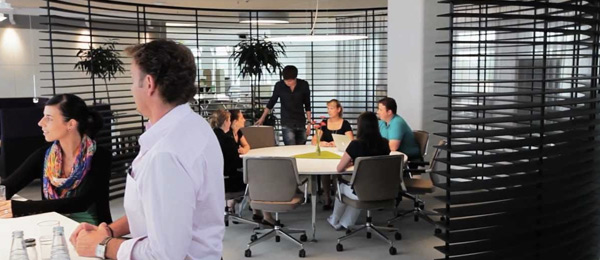Op de vraag: Hoeveel is de verhoging van de gezondheid en productiviteit, en hoe zit het met het welbevinden van de medewerkers? Hierover zijn de afgelopen jaren diverse onderzoeken gedaan. Er is nu een methode waarin je concreet kunt meten wat de effecten zijn. (zgn. Leesman-methodiek) In deze blog verwijs ik graag naar de conclusies van het rapport dat door Worldgbc.org werd gepubliceerd.
Het meten van gezondheid en productiviteit, zie link Meetmethode voor gezondheid en productiviteit op kantoren
‘Findings of the report include:
Indoor air quality: A comprehensive body of research suggests that better indoor air quality (low concentrations of CO2 and pollutants and high ventilation rates) can lead to productivity improvements of 8-11%.
Thermal comfort: Research demonstrates that thermal comfort has a significant impact on workplace satisfaction and modest degrees of personal control over thermal comfort can return single digit improvements in productivity.
Lighting and views of nature: Several studies have estimated productivity gains as a result of proximity to windows, with experts now thinking that views from windows are probably the more significant factor, particularly where the view offers a connection to nature.
Noise and acoustics: Research suggests that being productive in the modern knowledge-based office is practically impossible when noise provides an unwanted distraction. This can be a major cause of dissatisfaction amongst occupants.
Interior layout: The way the interior of an office is configured (including workstation density and configuration of work space, breakout space and social space) has been found to have an impact on concentration, collaboration, confidentiality and creativity.
Active design and exercise: Health can be improved through exercise, and so active design within a building, and access to services and amenities such as gyms, bicycle storage and green space can help to encourage healthier lifestyles of building occupants.
Toolkit to measure health, wellbeing and productivity:
Financial metrics: Absenteeism, staff turnover, revenue breakdown (by department or per building), medical costs and complaints, and physical complaints.
Perceptual metrics: Studies which test a range of self-reported attitudes into health, wellbeing and productivity in the workplace can contain a wealth of information for improving office performance.
Physical metrics: Direct measures of the physical office environment, such as temperature, are key to measuring the effect on the health, wellbeing and productivity of workers. Exciting developments in this area such as portable and wearable technology are likely to substantially expand our understanding’.

